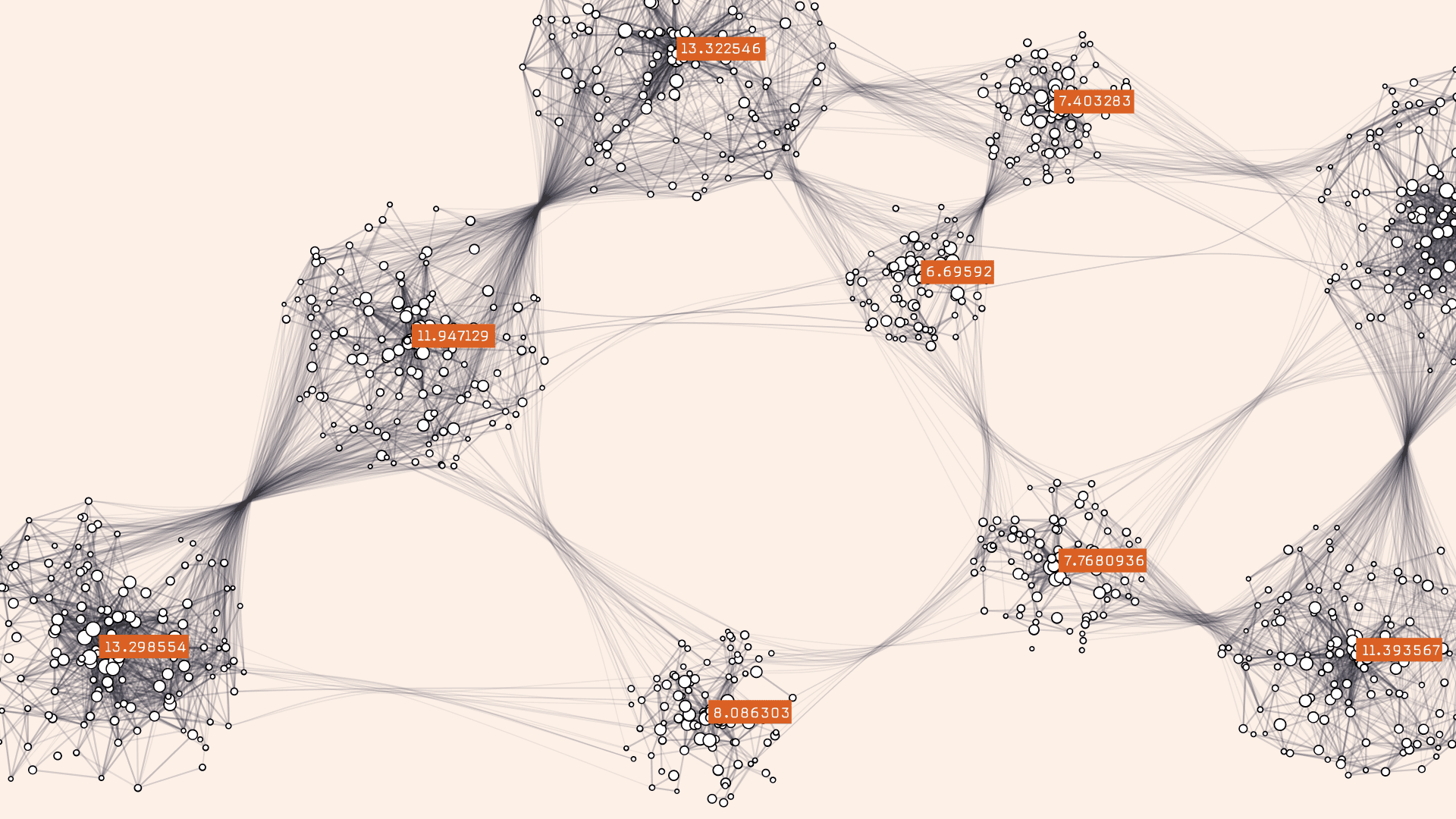This article features an interview with Bob Wood, a Board Member and Senior Advisor at McChrystal Group who previously served as the Chairman, President, and Chief Executive Officer of Chemtura Corporation, a specialty chemicals company.Wood lends his insight and expertise as he has seen several organizations of varying sizes adopt a matrix structure and make the transition successfully.
Much has been written about the benefits of matrix organizations and how they are supposed to operate in theory. But then a leader faces their first problem that may be exacerbated and not solved by the organizational structure. Your organization’s sales leader thinks the supply backlog is insufficient and doesn’t have the process in place to communicate it directly to the proper stakeholders. Or there is a breakdown in trust somewhere, resulting in a lack of buy-in on the organization’s priorities.
A matrix organization isn’t simply absolved of the issues that tend to plague traditionally structured organizations. Quite the contrary. Organizational structures don’t necessarily make silos go away — they may actually create new ones in different areas. As matrix organizations become more ubiquitous, it becomes all the more crucial to ensure the hallmarks of high-performing teams are present and demonstrated throughout the organization.
“At the end of the day, the real challenge, no matter however you draw the boxes and circles [of your organization], there has to be a leader,” said Bob Wood, the former Chairman, President and Chief Executive Officer of Chemtura Corporation, a specialty chemicals company. “And that leader has to demonstrate the behaviors they want their team to embody.”
The matrix developed as a natural evolution of organizational structures in response to new and evolving real-world business needs. The need was for a structure capable of being faster and more adaptable while managing large and very complex programs, projects, and problems. The conventional hierarchical management organization was unable to handle the added complexity and the enormous amount of information that now has to be processed in the information age.
‘Team of Teams’ shares a similar origin story and has made its mark by combining a nimble and highly adaptable structure with the behaviors to match to ensure productivity and clarity throughout all levels of an organization.
To lead an organization in the 21st century, General (Ret.) Stanley McChrystal asserted that a change in both mindset (i.e. behaviors) and organizational structure is required, just as he and his team undertook as they transformed the Joint Special Operations Command (JSOC) in the early stages of the war in Iraq.

Across the business landscape today, leading organizations are searching for the kind of improved adaptability that was incorporated into JSOC. With the ongoing shifts in the global environment, it's clear some organizations are already structured and positioned to succeed while some are not. Increasingly, organizations across industries are seeing the benefits of a matrix organization and shifting to that structure. Yet, transitioning to a matrix organizational structure is not a quick-fix solution. When done properly though, a matrix structure, whether it be implemented within a specific unit or your entire organization, can position your team to thrive in any environment with constrained time or resources.
One of the best examples of a matrix organization that I've seen was JSOC. General McChrystal didn't have the power to make every decision, and getting everybody together to achieve an objective was the clear challenge and is represented by how matrix operate or don't operate effectively.”
Bob Wood
Wood, who has more than 40 years of experience leading teams in a variety of industries and now sits on the boards of three public corporations, has seen firsthand the benefits of a matrix organization when its paired with the necessary behaviors and processes to succeed, namely trust and communication.
“Whether or not you have a typical line organization or matrix organization, though I would argue it's even more critical in a matrix organization, there has to be a strategy and a plan in place so you don't get overlapping priorities,” Wood said.
By incorporating the core capabilities detailed in ‘Team of Teams,’ namely trust, common purpose, shared consciousness, and empowered execution, the benefits of a matrix organization can be fully realized.
No one organizational form is guaranteed to work at all times or to improve productive output. However, it’s clear that some organizational forms have a better chance of working than others depending on the needs of the organization adopting the structure. When paired with the right behaviors, processes, and technology, the matrix organization can fit your teams’ needs.
Below, we’ll outline the four most common challenges we see matrix organizations encounter and how — with intentional design and development — leaders can overcome those obstacles.

1. LACK OF CLARITY AND ALIGNMENT
Challenge: In a matrix organization, employees report to both functional and project managers, which can create confusion about roles and responsibilities. This can lead to a lack of clarity and alignment, as team members may not be sure who they report to, what their priorities are, or how their work fits into the larger picture.
Solution: Establish clear roles and responsibilities. By embedding within your team a shared understanding of priorities, individuals and teams can align around a strategy with a deep understanding of how their roles fit into the bigger picture. This can only be accomplished if a strategy that the entirety of the team understands exists first. It is also key to maintain day-to-day communication to root out and avoid ambiguity and ensure that everyone is consistently on the same page. This is true at the organizational as well as the team level.
“The most critical part of that is to have a strategy that's understood and accepted by all the functions,” Wood said. “There's a business strategy, there's R&D, there are sales, there's manufacturing, there's marketing, all of whom have to understand what the strategy is and what their part in that strategy is.”

2. SILOED THINKING AND BEHAVIOR
Challenge: In a matrix organization, team members may become too focused on their own functional areas and priorities, rather than the needs of the broader organization. This siloed thinking and behavior can create barriers to collaboration and inhibit innovation and creativity.
Solution: Culture of collaboration. Creating cross-functional teams, providing opportunities for employees to learn from each other, and encouraging experimentation and risk-taking. All too often, Wood said, leaders think they are aligned because they are only thinking about the strategy and organizational goals as it relates to them and their team. Only through a collaborative way of working that is demonstrated consistently and evident in your team’s culture can dynamism and flexibility exist throughout the overall organizational structure.
“If you've got a business strategy that's overridden by functions who have different priorities, that is an inherent challenge to getting where you want to be because, by definition, you're not aligned,” Wood said.

3. DELAYED DECISION MAKING
Challenge: Matrix organizations require a collaborative approach to decision making, which can be time-consuming and has the potential to result in a lack of clarity around who has the final say. The nature of the matrix can lead to slow information-sharing and decision making bottlenecks, which can delay projects. The slow pace can come from the need to report information to multiple people. Having more people involved can at times be a good thing, but the downside is that relaying information to more people means it can require more time.
Solution: Empower decision making at the level closest to the issue. By clearly identifying decision making processes at each level, ambiguity is reduced and individuals across all levels are empowered to not only make decisions but to act and execute them. As a result, your team can become more adaptable and pivot and react to any situation, seizing opportunities faster than your competition while mitigating risks. Employees who are empowered to make the decisions necessary to do their jobs without receiving approval from their managers are 38% more likely to have a sense of shared ownership of their company’s successes and failures.

4. COMPLEX REPORTING AND COMPETING PRIORITIES
Challenge: The complexity of the matrix organization can be a disadvantage as individuals may have trouble knowing who to report to and when. While the intention of the matrix is to benefit teams, it also has the potential to complicate projects and muddy the overall process. It can be difficult for team members to juggle priorities in a matrix structure if managers don’t work together. If the department head believes their tasks are most important and a separate project manager thinks the same about their priorities, the team may have trouble determining which manager’s guidance to prioritize.
Solution: When team members have trouble prioritizing tasks because of miscommunication among managers, it’s up to the managers to discuss the tasks of the team and determine what should be done first. Most issues that have the potential to arise from the matrix structure can be solved with strong collaboration, communication, and clarity across teams, but that is of course easier said than done.
The best way to prevent a reporting failure is to ensure every member of the matrix understands who to report to and, importantly, how to do so. This ensures accountability is baked into how your team performs work.
“Accountability is the foundation for how things get done,” Wood said. “If I agree to it and then I go off and do something else, don't execute, we don't reach our goals, then it's pretty clear who fell short,” Wood said.




